Rising over an unloved stretch of highway north of Paris across from the famed Stade de France, the Centre Aquatique Olympique was inaugurated by French President Emmanuel Macron who hailed it as “exemplary” and a “completely new place…thought out with audacity, built in an unprecedented way.”
Designed by VenhoevenCS and Ateliers 2/3/4, and conceived in partnership with Schlaich Bergermann Partner, Inddigo, Inex, and Katene, the natatorium’s unique profile is defined by a 291-foot catenary roof composed of lamellé-collé, or glulam, that will shelter 6,000 ticketholders for diving, races, synchronized swimming, water polo, and boccia for the 2024 Olympics and Paralympics.
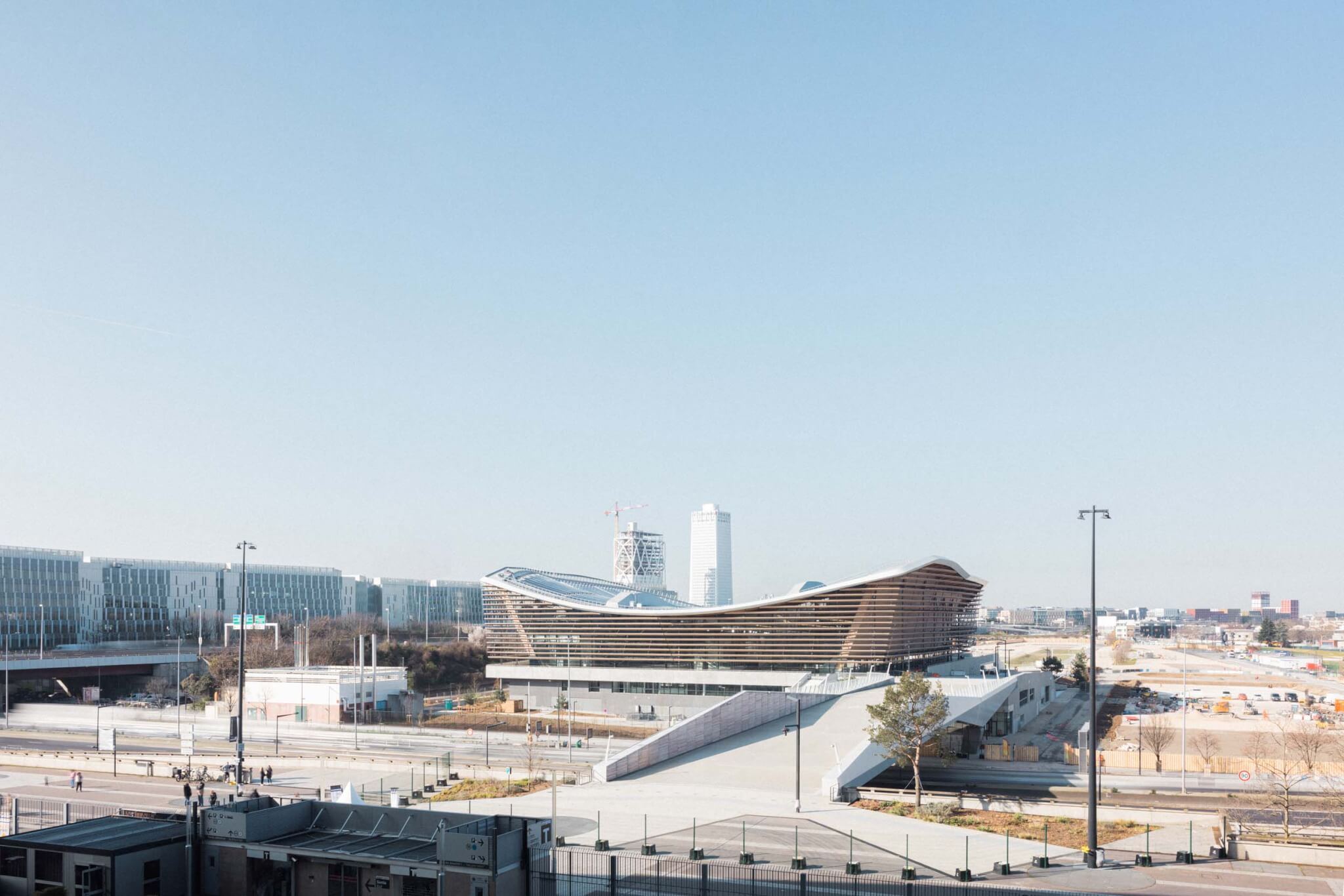
Its innovative use of spruce and Douglas fir timber—glulam beams prefabricated in Alsace from a mix of French and Finnish sources—certainly evokes Eero Saarinen’s terminal for Dulles Airport, yet the similarities stop there. In scale, purpose, and materiality, this aquatics center is in a separate category altogether—and must accommodate totally separate user groups, from parkgoers to the French national diving team. Yes, the carbon reduction benefits of renewable mass timber appealed to both the architects and the client, a regional commission called the Métropole du Grand Paris charged with unifying 314 square miles of banlieues, their surrounding suburban departments, and Paris proper into a single economic, environmental, and urban region. But yes, it’s extremely ambitious to ask wood—no matter how well glued and reinforced—to span nearly the equivalent of a 300-foot-long football field.
Although all eyes are on the aquatics center as one of few pieces of new Olympic architecture in France, the architects were more focused on its viability beyond the closing ceremonies in August. By autumn, half of the 6,000 seats will be dismantled, effectively right-sizing the facility for normal use, revealing paddle tennis courts adjacent to rock climbing, indoor and outdoor soccer fields, and an area for fitness classes. (The seats are composed of 100 percent recycled material.)
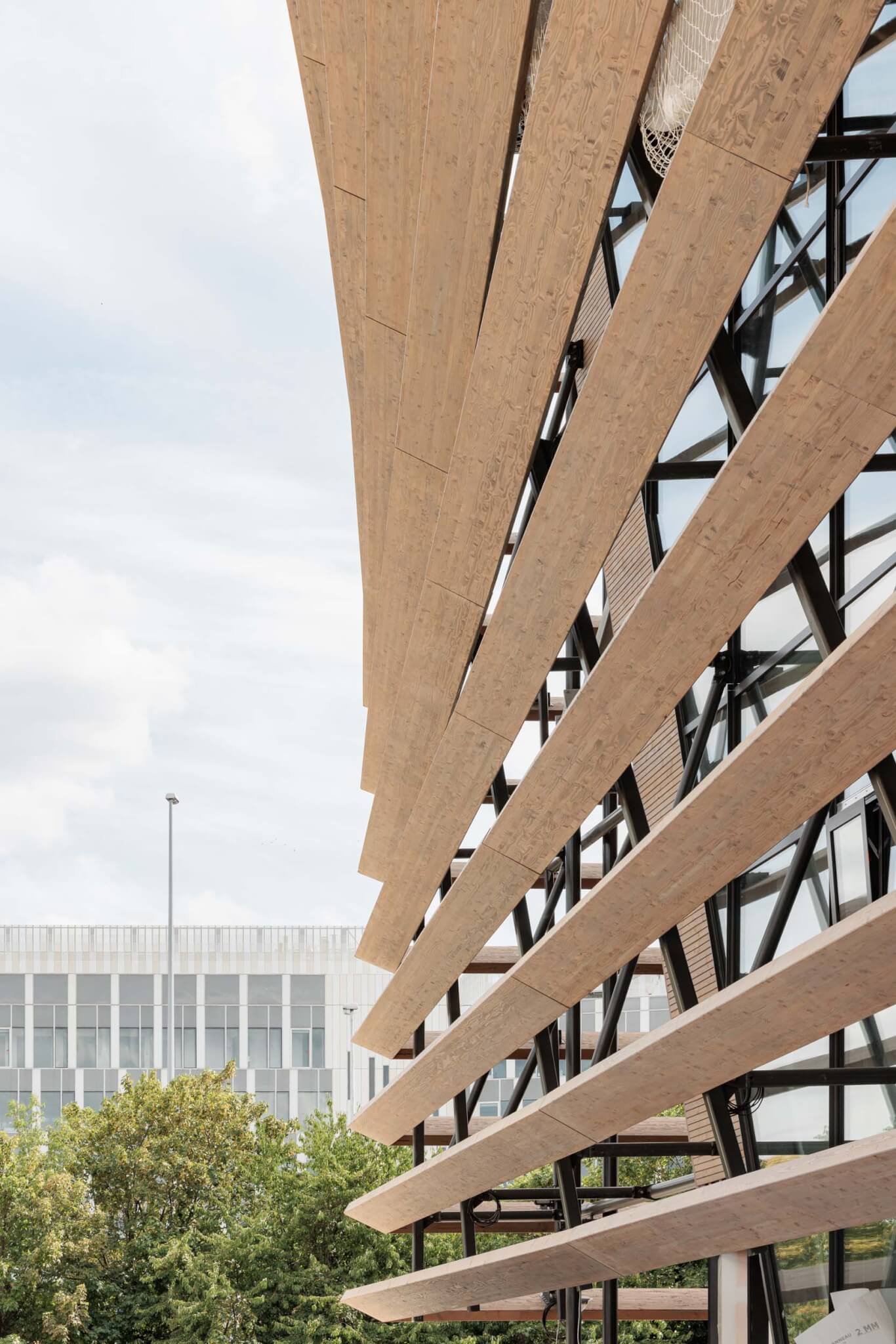
Sustainable specs extend to the very pool itself, too, which uses movable walls to accommodate different events at different times, whether an international competition or a local swimming lesson. Beneath the surface, the pool’s bottom has been sculpted to varying depths corresponding to the requirements for the diving board heights above. By shrinking the pool, the architects said they’ve reduced the amount of water needed by 25 percent. The most sculptural aspect of the building is the roofline, which stands out in a largely empty area. By opting for a catenary curve supported by glulam rather than a boxy, steel-trussed roof, they said they’ve reduced the overall interior conditioned air volume by 50 percent. Both moves, plus the roof’s solar farm, will reportedly result in an energy savings of 85 percent.
“We wanted to have a dynamic building for a lot of reasons, but because it’s in Saint-Denis, it’s a younger area demographically next to a big city,” said Laure Mériaud, a partner and director at Ateliers 2/3/4, “and everyone enters through the same door—the idea is that people have to meet each other and share.”
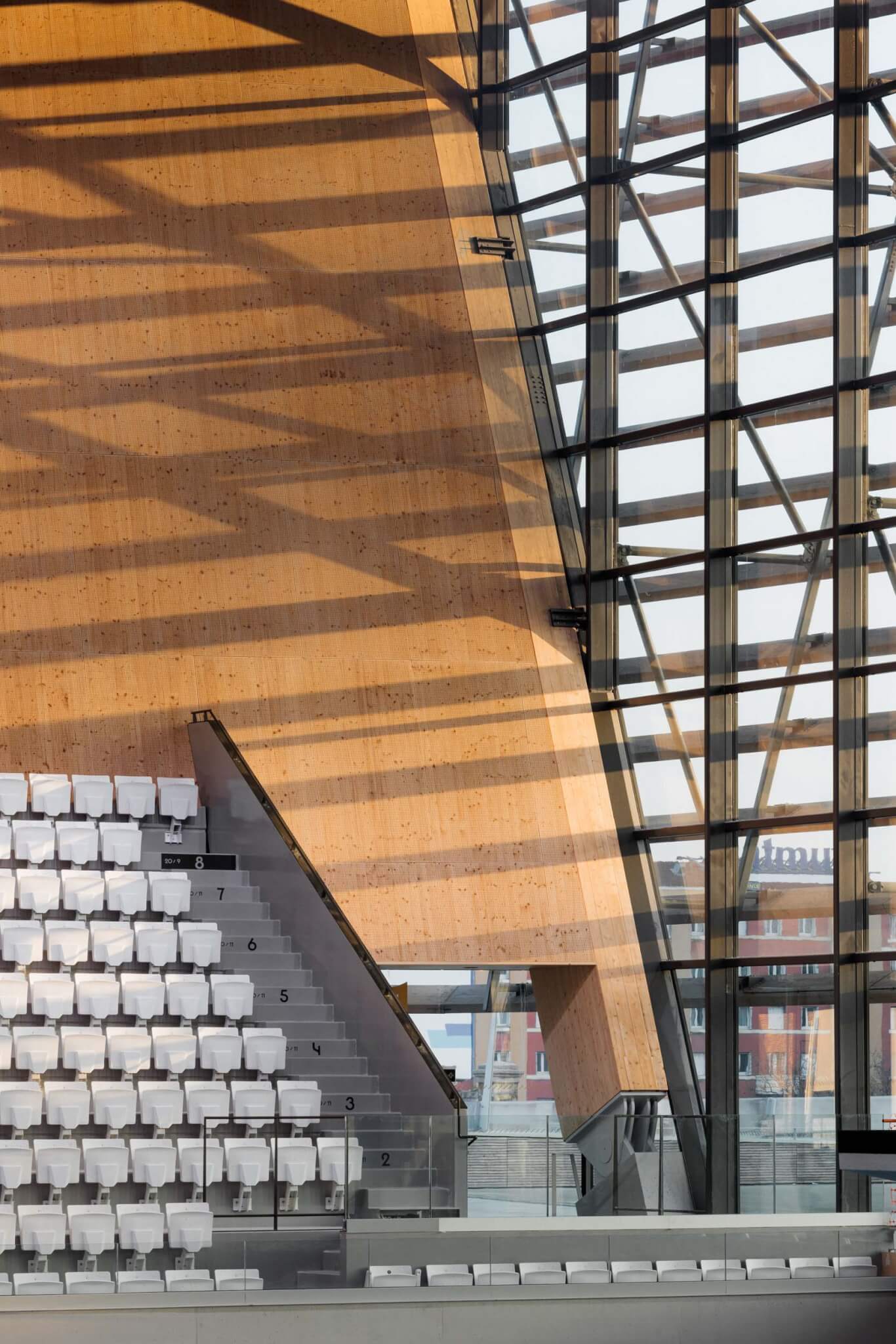
But what does it mean to meet in a place where area residents aren’t accustomed to going at the crook of two major highways, a canal, and a dozen train tracks? That remains to be seen. The hope is to create both an athletics precinct and what Mériaud and Gross call an “ecozone” that will define its legacy long after the games leave town, in contrast to some of the failed Olympic developments of other cities in past years.
Saint-Denis is the northernmost of the city’s surrounding banlieues—a permeable ring of suburbs where 80 percent of the metropolitan area’s population lives. Saint-Denis, home to Abbot Suger’s Gothic abbey and the necropolis for France’s kings, has seen a steady population growth rate in the last decade—30 percent higher than Paris—but not necessarily an upgrade in its housing or public amenities. As a rule, any piece of interstitial land between highways, canals, and train tracks in this outer ring of the city is ripe for redevelopment as the region undergoes a program of so-called “reurbanization,” and the architects of the new aquatics center have set out to accomplish a social program as well.
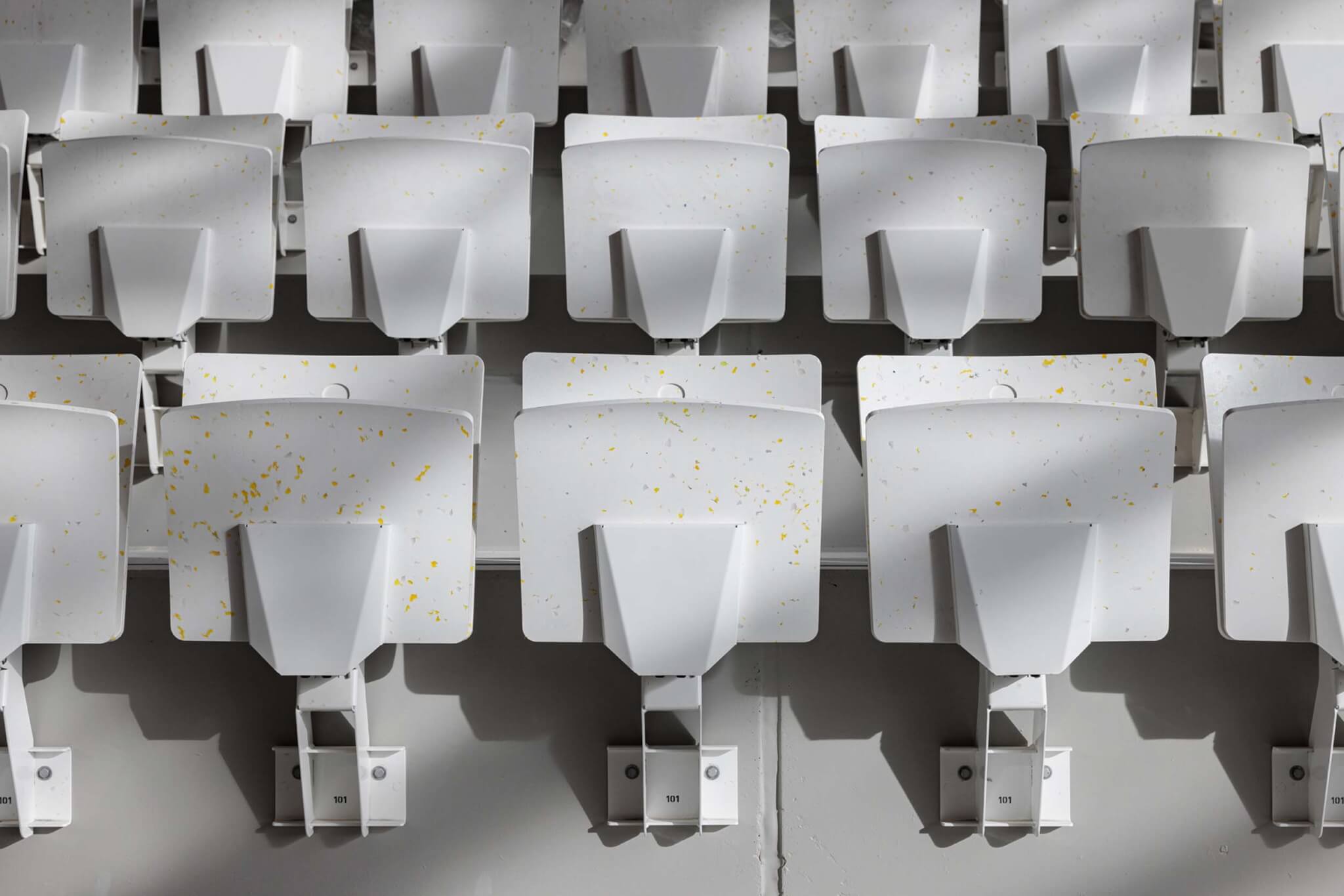
“For us, the main goal was to do a project for France for the long term, and we’ll make it work in the short term for the Olympics,” said Cécilia Gross, a partner and director at VenhoevenCS, “It’s going to be a kind of micro city for everyone to enjoy different things. It’s a way to mix a lot of different people, but to make sports visible for the entire neighborhood.”
Constructed alongside a bridge to the Stade de France, the aquatics center is also a way to make the neighborhood accessible to the fans that might turn up for one reason like a match or a concert but find another to stay. (Connecting the stadium with the aquatics center required the contractor, Bouygues Batiment, to close the A1 highway for three days in 2022.)
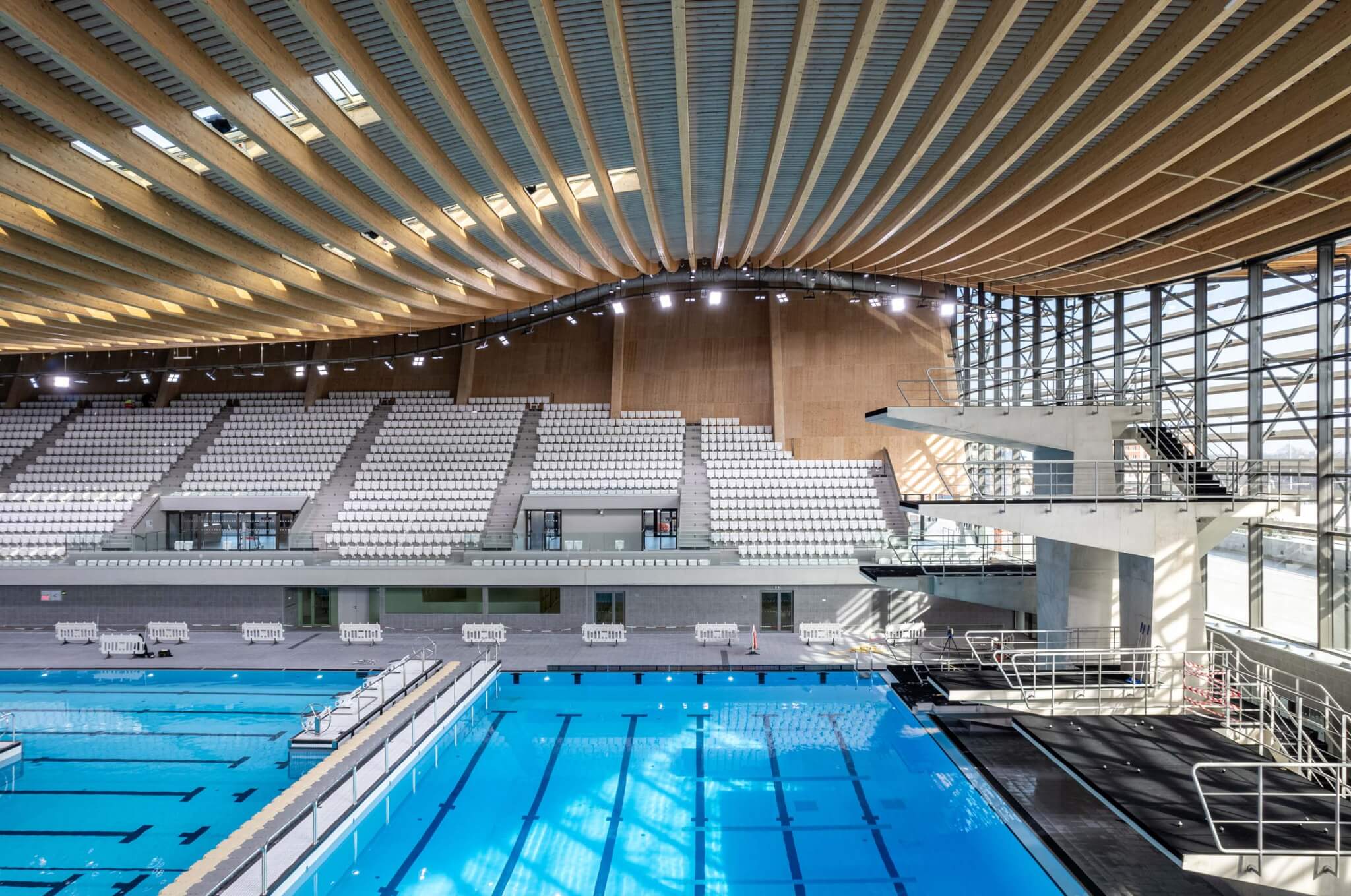
For Mériaud and Gross, though, if the goal of the aquatics center was to create something that could be useful to France beyond a few weeks of Olympic and Paralympic games, then it had to translate that “ecozone” into something palpable and personal that’s about more than energy savings and calculations.
“It’s like a big cabane in wood,” said Mériaud. “It’s familiar. It feels good—the wood—and on every visit we’ve had with students or athletes or anyone, people just wanted to touch it. Here, you see touch wood and you see sky above and you feel fresh air when you stand next to the building—it’s natural.”
William Richards is a writer based in Washington, D.C. and Paris, and the cofounder of Team Three, an editorial and creative consultancy.

